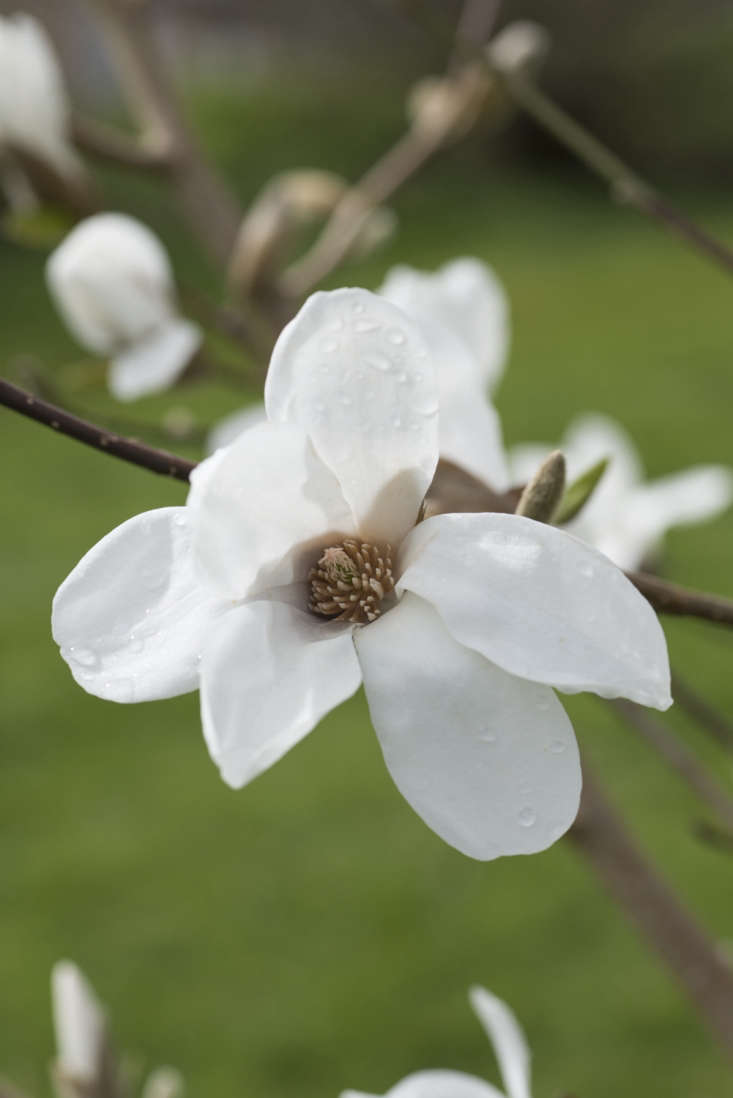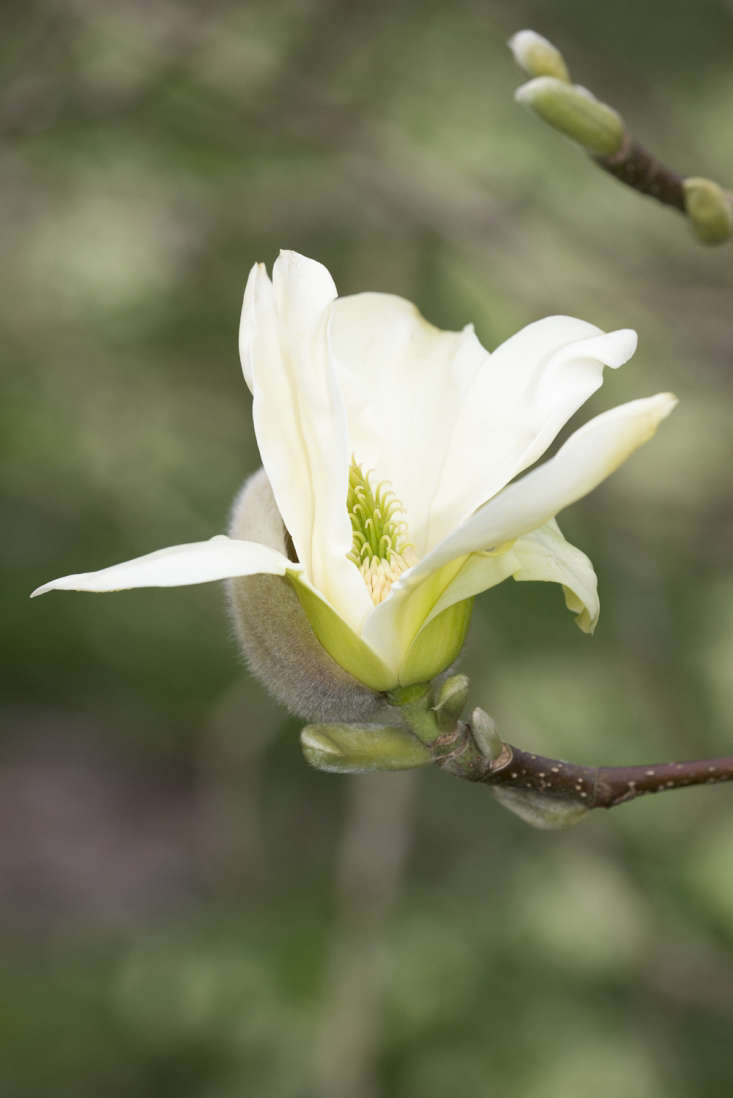After visiting a place where magnolias grow luxuriantly (such as Cornwall in England), it is natural that on arriving home, the idea of growing one takes hold. Not the usual saucer magnolia (Magnolia x soulangeana), but hybrids that are less neat, and more strange, in clotted cream yellow or the deep pink of a silk kimono.
This is a family in which future giants can take half a century to flower: Impulse buying never looked more risky. On choosing the best magnolia to plant, there is nothing like the advice of an expert grower, but consider this as an introduction.
Photography by Heather Edwards for Gardenista.
Magnolia ‘Wada’s Memory’

Magnolia x loebneri ‘Snow Drift’

Magnolia x loebneri ‘Leonard Messel’

Magnolia x loebneri ‘Leonard Messel’ is long-flowering, and again, shell pink. It is named after the father of stage designer Oliver Messel, and was raised at their home of Nymans in Sussex. Other good stellata hybrids with a deeper color are the eight small shrubby trees with simple girls’ names: ‘Susan’, ‘Jane’, ‘Anne’, etc.
Magnolia sprengeri ‘Diva’

Magnolia ‘Caerhays Surprise’

In the magnolia family, 15 feet is not very big at all, compared with say, 100 feet. It follows then that a 15-foot tree is for a “smaller garden,” as suggested by Burncoose Nurseries where Magnolia ‘Caerhays Surprise’ is raised. It is not a dense tree, nor a particularly tidy one, but its loosely windswept blooms in 1950s pink will stop you in your tracks. For that reason alone, it is a top choice. Plus, one branch brought indoors is an instant arrangement.
Magnolia ‘Iolanthe’

Magnolia ‘Iolanthe’ is an exceptional hybrid from New Zealand, bred by the late Felix Jury. It has the advantage of being a reasonable size (21 feet) with very large flowers that bloom (as can be seen here) from an early age. Great advances have been made by Kiwi and American nurseries in the past couple of decades, bringing forward the flowering age of magnolias; a large species tree would traditionally need to reach maturity before flowering (and they are very long-lived).
‘Apollo’ is another from this stable, its flowers resembling at first something more traditional and bowl-like, though in a darker, dustier pink. Its petals of around 10 inches (more properly called tepals) reflex to reveal a paler interior. It is a memorable magnolia, and grows to about 16 feet. Again from New Zealand, ‘Star Wars’ is about the same height but wider.
Magnolia acumimata x denudata ‘Sundance’

More and more yellow magnolias are appearing, extending the season for magnolia collectors, since they flower in May instead of February. They are also a good guarantee against frost damage, opening later, and can be planted in colder (though not windy) locations. The most popular yellows are: ‘Yellow Bird’ from the Brooklyn Botanic Garden, flowering before the leaves come out, (which aficionados appreciate), and ‘Sundance’ (shown above) which does not. ‘Yellow River’ has been selected by the Duchy of Cornwall Nursery; it’s listed as medium-sized (i.e., from 23 to 33 feet).

Of course, you want your own magnolia tree now—who can resist these velvety beauties? For more of our favorite species—and growing and care tips—see Magnolia Trees: A Field Guide.
For more magnolias from Cornwall, see Gardening 101: Magnolias—and browse all of our posts about trees in our Design Guide: Trees.
















Have a Question or Comment About This Post?
Join the conversation (0)